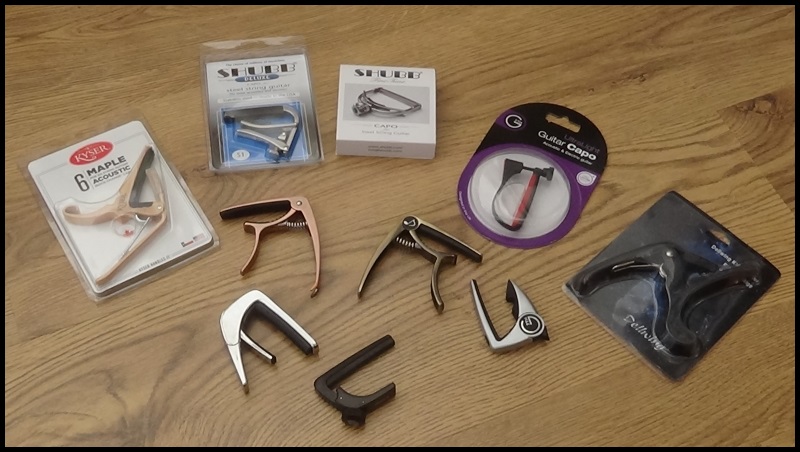
Welcome to a new feature here at Guitar Domination where I’ll be doing a ’round-up’ review of a bunch of products all in the same category. For the very first one, I’ll be reviewing a whole bunch of capos from super expensive to super cheap and telling you my no B.S thoughts on them all.
Capos are a wonderful tool for the 21st-century guitarist. Gone are the days when you get sneered at by some pompous “capos are for wussies” type players who have a chip on their shoulder only because they never used or saw the benefit of using one in their early learning days.
In fact, capos are one of the 6 best guitar accessories I recommend all students get when they first start playing.
The capo is a great tool that makes learning the guitar easier, more fun, and allows for some superb creative ideas. Many beautiful fingerpicking songs require a capo to be able to play them, as a lot of you will know from my recently revamped Fingerpicking Classics course.
Students, both in person and here at Guitar Domination, frequently ask for my recommendations for which capo to get.
Over the last month or so I have gotten together a whole bunch of capos and road-tested them in various ways.
There have always been a few I like but I decided it would not only be fun but super useful for you if I test out a whole bunch.
These capos range from the very popular, to the premium end of the market, to the budget ones which have gotten a bit of a following and lots of good Amazon reviews.
Out of the 10 reviewed, there is certainly a capo to suit each budget, style and taste in this round-up review.
How I tested the guitar capos
I tested each capo out on four test guitars (more on the testing later).
Each capo got a thorough examination on the following criteria….
Features
There are multiple types of capos as you will see in the review. The different types have their pro’s and cons. This section will be a brief outline on what type of capo we have and other things worth mentioning.
Tuning
One of the most frustrating things about using a capo is that they can send your guitar out of tune even when it is actually in tune and properly intonated.
This is because they often clamp too tightly on the strings and pull them out of tune.
If you have ever tuned up, put the capo on and then thought to yourself:
“Something doesn’t quite sound right, but I can’t place what it is.”
It’s probably because the capo has pulled one or more of your strings out of tune. When this happens you then have to retune your strings to where the capo is which is a pain but it is better than playing an out of tune guitar!
For this review, I’ll be looking very closely at tuning. I will be checking each capo’s intonation using a tuner for frets 1, 3, 5, 7, 9.

Me, getting rather excited at my new box of toys!
Ease of Use
Some capos can be really difficult to put on and off and move to a different fret so I tried the ‘one-handed test’ for each capo to test its ease of use.
Build Quality
It’s important that each capo is strong, sturdy and ready to stand a lot of use. There is not much point in having a great capo if it falls apart by the time you have learnt to play ‘Fast Car’, or if it has weak parts and bends and breaks with the customary dropping on the floor we all seem to do with a new product as soon as it leaves the packaging!
Value For Money
Some of the capos in the review are way more expensive than others with prices varying from the premium (Thalia 200 $79.99) to the budget Donner DC-2 ($8.49).
Most of the capos fall in the $10-$30 bracket and I have linked to the U.S. Amazon listing for the product as well as the manufacturer’s site (although not all of them are available to buy on Amazon in the U.S and not all have websites).
Rating
Taking into account all of the above, I have given each capo a rating out of 5 using ‘G’s (for ‘guitar’) instead of stars. (clever, eh?)
Here is what the ratings all mean…
Awesome!
Very good but not quite perfect!
Good but with faults!
A little shoddy!
Oh oh, this is pretty poor!
The results – which is the best acoustic guitar capo?
In the random order that I picked them up out of the box, here are my thoughts on the capos in the review….
Shubb S1
Features
The Shubb S1 is a stainless steel capo that features an adjustable screw with the intention of getting perfect and precise tuning at any fret. The S1 is designed to fit most acoustics and electrics but there are other models that fit classical and 12 string guitars amongst others.
Tuning
After trying it on all four guitars it is pretty clear the Shubb can tune and intonate well on all of them at a variety of frets. It just takes a small turn of the screw while in position.
Then, unless you have massive jumps in fret position, such as from fret 1 to fret 10 it is pretty accurate along the neck.
Ease of Use
Although not difficult to use it is a little more fiddly than some of the other capos but with a little practice you can learn how to place it one handed on the neck.
As for adjusting the intonation, that is a piece of cake with just a simple turn of the screw.
Build Quality
I have the deluxe model which is stainless steel rather than the standard one which is brass and nickel plated. According to Shubb, the stainless steel version is more resistant to nicks and scratches.
They are built and assembled in the U.S.A. and the craftsmanship is very good. It feels and looks like a nice piece of gear.
Value For Money
It’s not the easiest to use and does require adjusting to be in tune for each guitar but it is low in price, high quality and very accurate.
What it loses in convenience it makes up for in value. Overall, it’s a great capo to have in your locker.
Rating
Get it!
Adagio Pro Deluxe
Features
The Adagio Pro Deluxe is a typical budget spring-loaded capo. It also rather bizarrely, but quite coolly has an inlay at the end designed so you can pull out the pegs on your acoustic when changing strings.
Tuning
Unfortunately, this capo comes with all sorts of tuning issues. It sends each note slightly sharp, it needs to be placed in just the right spot or the string buzzes and the sustain dives faster than a lead balloon holding the weight of your favourite 65 Twin amp.
Ease of Use
Just like most spring-loaded capos it is easy to use but the spacing between the clamp and the arm is small so unless you fully open it by squeezing hard it is easy to ‘catch’ a string when putting it on causing you to bend it – thus making it even more out of tune!
Build Quality
It actually feels pretty solid and sturdy and feels like it is built to last.
 Value For Money
Value For Money
It’s cheap but it has so many tuning issues you would be wasting your money on it.
No matter how stylish a capo is, or what features it has or how easy it is to use, it has to tune well, if it doesn’t it will lose marks and unfortunately, the tuning capability of this is very poor, hence why I wouldn’t bother with it.
Rating
Get it!
- Amazon
- Manufacturer (no site)
G7th Performance 2
Features
Unlike many capos, the G7th Performance 2 is NOT a spring-loaded capo but instead uses G7th’s ‘Unique Tension Control System’ which allows you to control the amount of tension placed on the neck of the guitar.
Tuning
As you control the tension by squeezing the capo shut and not relying on a spring you don’t get any tuning issues. Most spring-loaded capos can’t be adjusted but this one is all under your control which is a breath of fresh air to those who have used cheaper capos before.
If you find the notes aren’t quite in tune, just squeeze a little harder or loosen just a touch.
Ease of Use
What I love about this capo is that I never really had to adjust it much at all to get it to be precisely in tune.
I basically just place it on the strings, give it a squeeze till it feels right and everything is good to go. It is very intuitive. Once you have used it a couple of times it is a piece of cake to use and it passes the one-handed test.
Build Quality
It is built superbly. It feels compact, solid and strong. I have dropped mine plenty of times and have no worries about it breaking or getting damaged.
Value For Money
The Performance 2, providing you don’t lose it like a student of mine did with hers, is a wonderful investment for the money as it is a great capo.

Rating
Get it!
Dellwing
Features
The Dellwing is another budget capo that is pretty large and weighs quite a bit. Not sure why it needs to be so heavy. Maybe it is just in case someone wants to rob you of your favourite Martin 000 acoustic so you can beat them over the head with it.
Anyway, it is a straightforward spring loaded capo that is pretty much no frills.
Tuning
Surprisingly for a budget spring loaded capo, this one is pretty accurate on all the frets tested for three out of four of the test guitars.
The Aria was tuned slightly sharp on most frets whereas the other three guitars were very accurately tuned. This was a big and pleasant surprise.
Ease of Use
It is pretty easy to use but is very smooth and the clamps are quite far apart so unless you have large hands (which I don’t) then squeezing the two clamps together requires you to place the capo in just the right position in your hand – otherwise you will have to do the dreaded reach over with the other hand.
Build Quality
It feels like it is built like a tank and maybe if you threw it at a tank it might dent it somewhat.
It doesn’t have an expensive look (my polite way of saying it looks a bit cheap) but it will do the job and will last a while. Just don’t drop it on your guitar (or your foot!)
 Value For Money
Value For Money
It is also not overly expensive, just don’t go dropping it and ‘dinging’ your Les Paul otherwise the repair bill might be!
For a spring-loaded capo, it is accurate, easy to use and works well on a variety of frets without having to have superhero grip strength.
Rating
Get it!
- Amazon
- Manufacturer (no site)
G7th UltraLight
Features
The UltraLight is G7th’s latest capo and is a screw-style capo aimed at those who are on a budget but still like a capo to have good tuning stability and sustain. It is also pretty small and weighs just 8 grams.
Tuning
Just like any screw-based capo, the tuning is within your control and this tunes bang on for all four of the test guitars but I did need to leave the tuner on and tweak the tension to get it just right for the guitar to be accurately tuned.
It is not quite as intuitive as some of the other screw based capos in this review.
Ease of Use
Just like most screw type capos it isn’t that easy to use and this one can’t be placed on the fretboard one handed but can be taken off one-handed and once it is on the fretboard moving it up and down to another fret is pretty simple.
You also need to be careful not to unscrew it too much as the screw actually came out a couple of times when using it. It is easy to put back in but still, that is not great.
Build Quality
It is pretty decently made but it is so light and does feel a little flimsy. I can’t see it breaking unless it is given a real hammering but the delicate feel is something that puts me off a little. I have twisted it round (as it is very flexible) to test its durability and to be honest it is tougher than it feels.
Value For Money
It’s cheap, tunes accurately and is tougher than it first appears but there are flaws and better alternatives for the price.
If I was on a budget I would consider another capo in this list or save a little more and buy the superior Performance 2 if I wanted a G7th capo.
Rating
Get it!
Donner DC-2
Features
The Donner DC-2 is another spring-loaded capo with the spring apparently “having internal memory to provide strength and fatigue resistance” – whatever that means.
It does look pretty cool apart from the quaver symbol on it (a little cheesy for my liking).
Tuning
Unfortunately, the Donner suffers the fate of many spring-loaded capos but it suffers it on overdrive. Out of the four test guitars it only tuned the Aria accurately (must be the size of the neck must be just right for the capo) and every other guitar was sharp on each fret.
This is not that untypical of cheaper spring-loaded capos where there is no ability to adjust the tension. What’s worse, is that the sustain seems to die a death on the higher frets too.
Ease of Use
It is a simple to use spring-loaded capo – using it one-handed is a breeze and the spring is not too tight. It is worth being careful, particularly if you have a chunky neck of a guitar, that you don’t ‘catch’ the strings when placing it on the fretboard as the strings can end up being tuned sharp if you do so.
Build Quality
Nothing spectacular here apart from to say it feels solid as a rock and doesn’t feel like it is going to break anytime soon.
 Value For Money
Value For Money
There are a lot of good Amazon reviews for this capo and after reading them I was happy to pay £5.99 ($7.92).
To be honest, if you really don’t care about tuning or don’t mind placing the capo in position, and then tuning to the capo then it is okay but it’s likely you do care about those things.
Therefore, to me, this capo is pretty much a dud (not sure what the Amazon reviewers were thinking!)
Rating
Get it!
Shubb F1
Features
The Shubb F1 is one of the most expensive capos in our review. It is an old-fashioned but very cool yoke style capo that is designed to be left on your guitar.
When you don’t need it, instead of taking it off like most capos, you can just move it up past the nut and tighten it just a touch and it will stay there. This is great if you are like me and occasionally lose your capo!
Tuning
The tuning of this capo is exceptional. As you can change the amount of tension at any point by tightening or loosening the screw, you have full control over the tuning.
It doesn’t have the typical capo ‘arm’ so the pressure is applied to the middle of the neck and therefore there is an even amount of pressure, unlike most capos which are a little tighter on one side than the other.
Ease of Use
It is very easy to use and features a screw adjustment knob that allows you to increase or decrease the tension on the capo to suit whichever guitar it is being used on.
The only little issue I had is on the Cort which has a higher action and thicker neck than my other guitars used in the test. Up at the higher frets, I had to give it a real squeeze to get it to clamp the strings tightly – apart from that it is super easy to use. To be honest, for this guitar I would probably need to get the F3 as this is designed for wider necked guitars.
Build Quality
A capo should be well built and made to last and this one certainly is. It is made well, designed perfectly and is almost like a piece of jewellery it is that precisely put together. It certainly doesn’t feel (or look) like some of the more budget capos in this review.
 Value For Money
Value For Money
Although expensive, and more than what most beginners would like to pay at first, it is great value as it is very high quality, is made to last, easy to use and the only one of the capos in this review that is next to impossible to lose.
I love it, it looks cool with its classic design and is well worth paying extra for.
Rating
Get it!
- Amazon (currently not available on Amazon)
- Manufacturer
Thalia 200
Features
The Thalia 200 is a unique capo that comes with 7 interchangeable ‘fretpads’ ensuring the capo will match the fretboard radius of your guitar. This is something I have never come across before and the aim is to nullify the tuning problems that come with clamp type capos.
Tuning
I first tested the capo with the standard fretpad that came with it and did this for all four guitars and found that I needed to change the fretpad pretty quickly for tuning accuracy. Once changed, however, the tuning was pretty much immaculate for each guitar up and down the neck.
Ease of Use
Using the capo is pretty simple and there is a ‘quick start guide’ to help if you are unsure. It is a breeze to move up and down the neck and can easily be done one-handed and with ease.
Changing the fretpads takes seconds which is great if you use it for more than one guitar.
Build Quality
It is beautifully built and feels like a real piece of craftsmanship. I love the ‘Santos rosewood’ inlay design I have but the other designs look pretty stunning too.
 Value For Money
Value For Money
It is, without doubt, one of the most accurate, unique and most flexible capos around allowing you to get precise tuning on a variety of guitars and is easy to use.
Although not the cheapest it is a classy investment for a pro level capo.
Rating
Get it!
D’Addario/Planet Waves NS
Features
This is one of the oldest capos I own and has been one of the most reliable for years – you can see it in plenty of my tutorial videos). It looks pretty basic, and it is, with a simple jet black look and a screw to adjust the string pressure.
Tuning
I’ve never had issues with tuning with this but I obviously still gave it the same test as with the other capos in this review.
It tunes really well – although you have to give it a good squeeze as the far side does seem to lack a little clamping ‘power’ as compared to the side nearest the screw.
Ease of Use
These type of screw capos aren’t as easy to use as quick release capos (but do generally tune much better). It isn’t overly hard to use and can be used one-handed, just about, but that takes a little practice to be able to do that. You may also need your picking hand to help clamp it when using it on the higher frets.
Build Quality
It is solid but not spectacular. It has lasted years and feels like it wouldn’t break at any moment. According to the manufacturers, it is made from moulded ABS thermoplastic (sounds fancy!). Basically, there are minimal parts to it and it is well constructed.
 Value For Money
Value For Money
Everyone should have a backup capo for those times when the ‘capo thief’ (the ‘sock thief’s guitar playing cousin) comes and pinches your main one – this could well be it.
One of my most reliable capos ever. Not as fancy, stylish or as easy to use as others in this review but it is cheap and a great first capo and/or backup capo.
Rating
Get it!
Kyser
Features
The Kyser Quick Change capo is a simple spring based capo that is one smart looking piece of gear. I got mine in maple and to me that looks like the smartest of the lot and Kyser do a big range of colours.
Tuning
The tuning is pretty good but as with many similar capos, you need to have a little practice as to where to place it exactly for the most precise tuning.
I found once I ‘broke’ the capo in a little, it tuned better and was pretty accurate on 3 out of the 4 test guitars but strangely it didn’t tune that well with the Les Paul (was slightly sharp).
Ease of Use
It is pretty easy to use but is a little on the tight side and needs a good grip to get it going.
I like how it is purposely designed to be placed on the strings from the bass side as this stops your fretting hand from being restricted by the capo itself which is a nice bit of design subtlety.
Build Quality
It is really well made and feels (and looks) like it cost a whole lot more than it actually does. It is strong looking and beautifully varnished giving a nice slick look and feel.
Value For Money
Out of our scale range of prices in our review, the Kyser is one of the cheaper ones and does a good job. Apart from it being a little tight, and not really getting on well with the Les Paul, it is a very good capo. It looks the part, feels great and is pretty splendid for the money.
Rating
Get it!
So, what is the best acoustic guitar capo?
Most of the capos reviewed were great, some awesome and a couple damn poor.
My personal favourites are the Shubb F1, Thalia 200 and G7th Performance 2.
All three of those have great tuning accuracy, ease of use, build quality and overall style. They aren’t the cheapest but it goes to show you get what you pay for and those three are simply awesome.
If I was really pushed to pick just one, it would just about be the G7th Performance 2 but the other two are fantastic also.
Many guitarists assume there is a best capo for acoustic guitar or a perfect one for electrics but those three show a good capo is a good capo.
For those on a tight budget, the D’addario, Kyser or Dellwing will do a good job on a variety of guitars.
Some of the capos have different sizes for different necks so if your acoustic has a really large neck you may want one of the various larger models that some of the manufacturers make to suit that guitar.
A bit about the testing
The same tests were all performed on the following guitars which have very different necks and allowed me to really test the capos:
- Cort MR-710F
- Aria AGP-001
- Yamaha Pacifica 812v
- Epiphone Les Paul
All the guitars were accurately intonated and I checked the tuning of the strings before placing the capo on the frets where the capo would be placed to ensure I got an accurate reading of any tuning issues that the capo created (if any).
I spent more time testing these capos on the acoustics but wanted to give them a look over on electrics too.
As well as the above, my testing also included playing some general pieces from a variety of songs such as Fast Car and Scarborough Fair.
I chose those songs as they give us a nice variety of fingerpicking and strumming, as well as being classics and they are great capo songs.
I’ll be doing more round-up style reviews at some point in the future if you regular readers find this an interesting/useful feature. This blog is for your benefit so, as always let me know.
Well, that is the review done. Leave a comment below and let me know what your thoughts are on the capos in the above list or which is your favourite or least favourite capo.



 Value For Money
Value For Money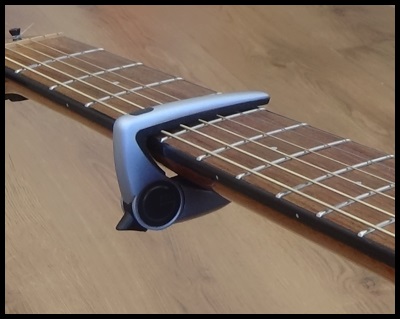
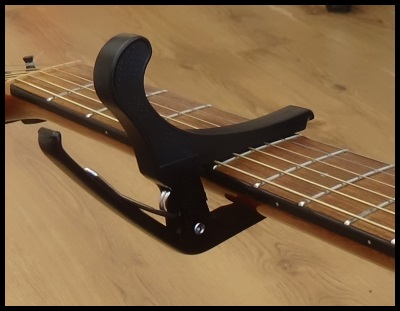
 Value For Money
Value For Money
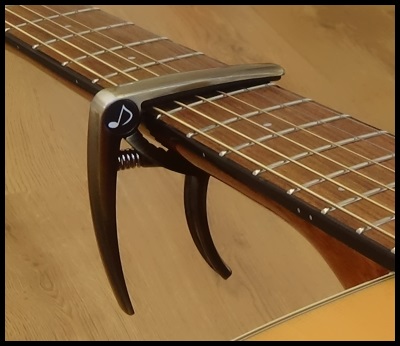
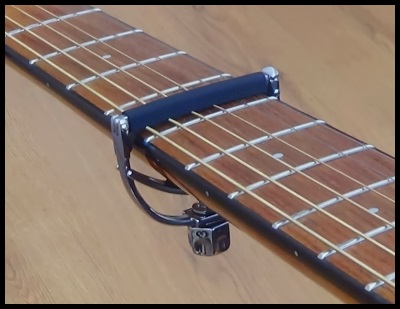
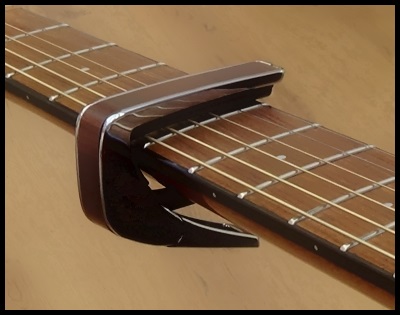
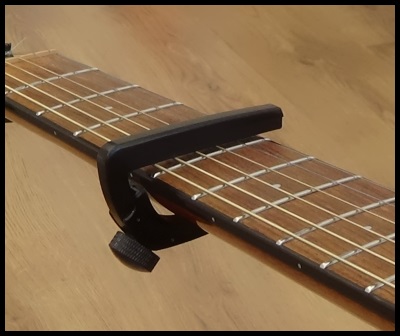
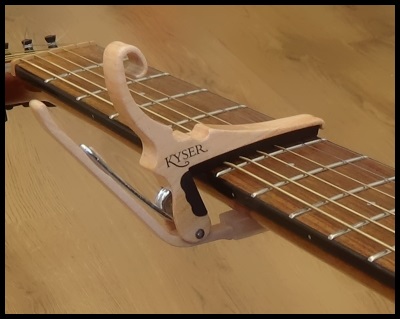
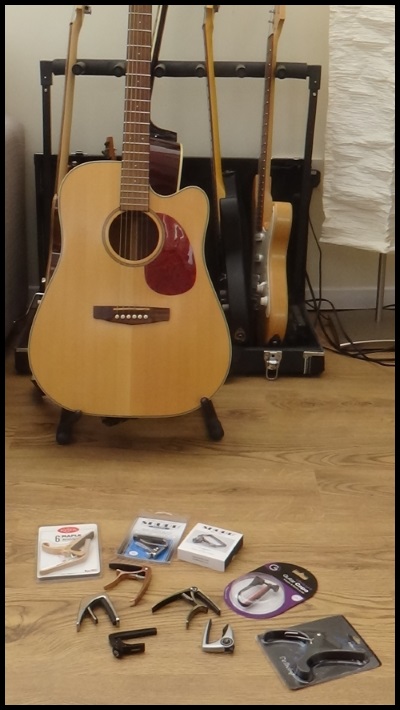
I LOVE my Thalia capo! I have the older model. It takes a little more hand strength to get it on the neck, but slides like a dream. And it never knocks my guitar out of tune. And it’s beautiful also! Score!
Hey Carrie, yeah, it definitely is one of the best I have ever used. Feels like a classy bit of gear too – so well made!
I took a look at the G7th Performance 2 and I must say for the quality and aesthetics of the capo it’s surprisingly affordable for one on a limited budget like me. Definitely like that!
It really is a top-notch capo, Max. I`m sure you won`t be disappointed – my students who have tried mine are all getting one now.
Mine doesn’t work well on my Strat. I get buzzing all the time. Sure, it’s super easy to put on and take off, but it doesn’t do its main job in my opinion. I’m searching for another now.
Jon, You say that you have a Strat. Does it have the more rounded fret board. like a 7.25 radius (vs. a flat 12)? Shubb has capo that fits rounder, more vintage style fret boards, their #4.
Dan has provided us a good introduction article for the capo. On my morning walk I found a Kyser standard capo – black and decided to Google capos. Thus found Dan’s website. I’ve doused the spring with some WD-40 and found that it works fine. “AW” is etched on it. Wish I could return it to “AW” but at least it has been rescued by a guitar player and will be put back into rotation and good use.
By far the prettiest and most versatile is my Thalia – their first model in an abalone finish that looks great on my baby blue Epiphone ES. Easy to move once it’s on, but requires a good amount of force to get on the neck the first time. For jamming when just hanging out and everyone singing along, I have to go with the Kyser.
Maybe not the most precise capo available, but for the average non-pro on a budget, probably the best bang for the buck. When I first started playing all that was available were those crappy elastic things that would dry up and break after a year of two.
Can’t complain – made me learn and practice Barre chords. But I do have to say it’s great to have so many choices. Every player should be able to find what works best for them.
Hi Karen, the Thalia is indeed stunning – definitely one of the prettiest capos I have ever seen. Looks super classy too.
You make a good point too about bad capos forcing you to learn barre chords. Back when I learnt capos were rare and most were awful!
I had to learn barre chords early on too but I was lucky that my guitar was really well setup. If not, and with no capo, lots of my favourite songs would never have made my repertoire!
Thanks for the comment.
I hate the G7th mk 3 capo. Its most fiddley and unreliable. My fave capo is a kyser standard capo in a rosewood finish. But its not perfect.
A note on the Kyser.. they advertise a lifetime warranty, which includes a broken spring. The spring on mine broke and they won’t respond to any of my warranty requests. They just ignore them. Because of that I would not buy another one of their capos.